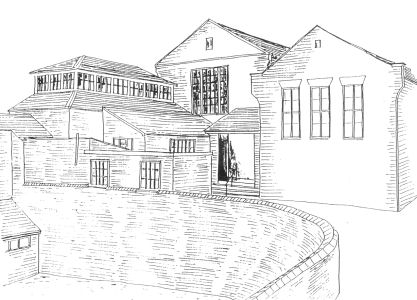|
The first school was a Boys' School founded in 1810 by the Hitchin lawyer William Wilshere. It occupied a large ground floor room of a two storey disused malthouse with a thatched roof located in Dead Street (now Queen Street). Next to the old malthouse fronting Dead Street was a house occupied by the schoolmaster.
The original schoolroom could hold 150 boys and the school was the first in Hertfordshire to be operated as a 'monitorial' school for the sons of the labouring poor. This system of education was pioneered by the Quaker Joseph Lancaster at Borough Road School in Southwark. Its principle was that large numbers of children could be educated under one teacher by older pupils teaching the younger ones - this was known as the 'monitorial system'. William Wilshere was influenced by Lancaster's work at Southwark and Joseph Lancaster visited Hitchin in 1808 - the year in which the Royal Lancasterian Society was formed. The Society became known as the British and Foreign School Society in 1814. The Dead Street school and master's house were owned, managed and maintained by William Wilshere.
The original 1810 school was a Day School and, in 1812, a Boys' Evening School was founded. Later, in 1819, a Girls' Elementary Day School began on the first floor above the original Boys' School. Both of these later schools were managed separately from the original school with the premises being provided rent free by William Wilshere.
No trace now remains of those original buildings
except for a memorial stone to the founder reading '1810 W.W.' which
has been incorporated into the later 1837 Boys' School. |
